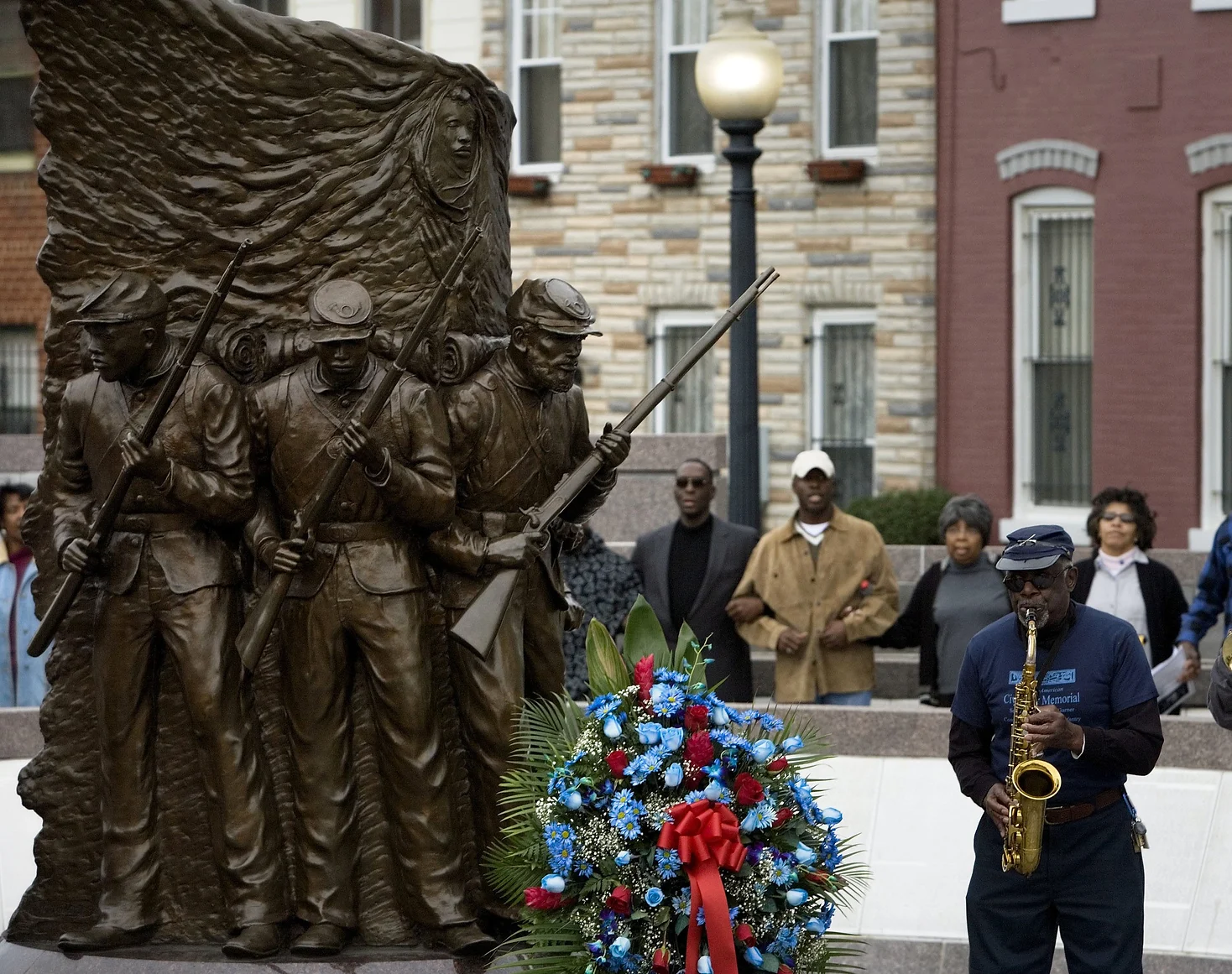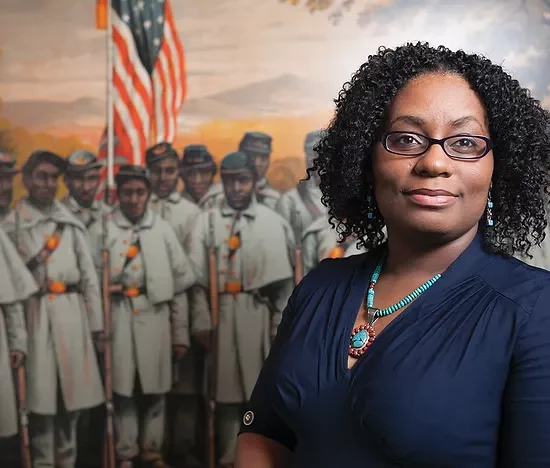Photo by Brendan Smialowski/Stringer/Getty Images News/Getty Images
The monument on Stone Mountain in Georgia stands as the largest and probably the last significant Confederate monument in the United States. Carved into a granite outcropping and an arresting 90 feet high, it is a bas relief of Jefferson Davis (President of the Confederacy) and Generals Robert E. Lee and Stonewall Jackson on horseback. Started in the 1920s, the memorial—photographed here under construction—was only completed in 1972.

Photo by Fox Photos/Stringer/Hulton Archive/Getty Images
Confederate monuments like this one mostly were erected between 1895 and 1965, spearheaded by the United Daughters of the Confederacy (UDC). The UDC created between 450 and 700 markers and monuments to the Confederacy and influenced the narrative of the Civil War more than any other organization for generations to come.
All told, more than 6,000 memorials of the Civil War decorate the American landscape, as compared to around 500 of the American Revolution. While over 1,500 of those monuments and markers are dedicated to the Confederacy, only around two dozen are dedicated to the United States Colored Troops. Monuments to the Union outnumber Confederate monuments, but their impact on American public memory is felt far less than Confederate ones.
Confederate monuments are heavy with racial meaning. Stone Mountain was the site that saw the rebirth of the Ku Klux Klan, a White supremacist terrorist group, in 1915.
But a parallel process of erasing Black participation from the Civil War and emancipation was well under way then, too. In 1913, the nation remembered the 50th Anniversary of the Battle of Gettysburg with commemorative events that included a re-enactment on the field where Pickett’s Charge had occurred and a figurative reunification of the Union and Confederacy.
No time or consideration was given to the effects of the war or the transformative legacy of emancipation, despite the fact that Blacks fought for and supported the Union at Gettysburg. Instead, white veterans of both sides, old men now (as we see in this photograph), met to shake hands symbolically re-uniting the nation.

Photo by Fotosearch/Stringer/Archive Photos/Getty Images
Enslaved people and free Black Americans played vital roles in the war effort and in abolishing slavery. In July of 1862, Congress passed the Volunteer Militia Act, enabling Black soldiers’ recruitment into the Union Army.
The tintype shown here depicts a seated Black soldier in full Union uniform with a Colt pocket revolver, ready for service. Taken sometime around 1862, this picture of an unknown soldier is like many thousands of photos that depict members of the United States Colored Troops, a division of the Union Army established to recruit, train, uniform, and deploy soldiers of African descent.
Over 200,000 Black men enlisted, making up 10% of the Union Army, and three in four of them had been enslaved at the beginning of the war. Ulysses S. Grant calculated their sheer value to the Union in a letter to President Lincoln: “[B]y arming the negro we have added a powerful ally. They will make good soldiers and taking them from the enemy weaken him in the same proportion they strengthen us.”

Photo by Bettmann Collection/Getty Images
When thinking about Black people during the Civil War, our collective public memory recalls enslaved people but not immediately those who endured the yoke of slavery or played a part in emancipating themselves. The African American Civil War Memorial in Washington D.C., erected in 1998, is one of the few memorials to honor Black soldiers during the Civil War.
Neither large nor grand, the monument stands just 10 feet tall and features soldiers on the front and a soldier departing his family on the back with the 200,000 names of the United States Colored Troops listed on the walls behind the statue. Some of the names honored here are familiar to us: Frederick Douglass’s two sons Louis and Charles, Sojourner Truth’s grandson, and Paul Lawrence Dunbar’s father, Joshua.
For some, the statue and the wall surrounding it represent the only place to pay homage to soldiers who received little to no public recognition of their deeds or memory for decades.

All wars are fought twice, first on the battlefield, then in our collective memory. The memory of the Civil War is just as contested as it was when it ended in 1865. To some, the memory of the Civil War is a fight for heritage, while for others, it’s a part of a legacy of emancipation that has yet to be recognized.
While the history of the war remains unsettled, we continue to grapple with how the past will be taught to future generations. Memorials play a part because they are the product of a tangible, anguished shared history and show how the nation is still divided over memory of the Civil War, slavery, and emancipation.

Learn more:
David Blight, Race and Reunion: The Civil War in American Memory (Harvard University Press, 2001)
Karen L. Cox, Dixie’s Daughters: The United Daughters of the Confederacy and the Preservation of Confederate Culture (University Press of Florida, 2003)
William A. Doback, Freedom by the Sword: The U.S. Colored Troops, 1862-1867 (St. John’s Press, 2016)





